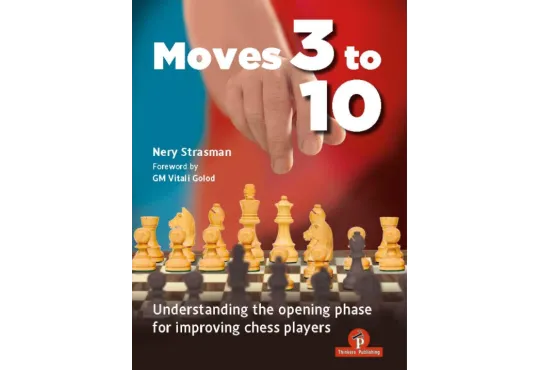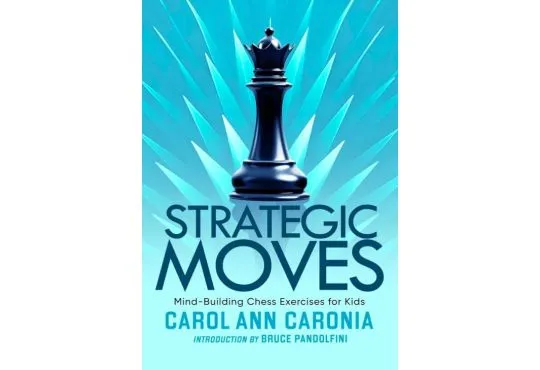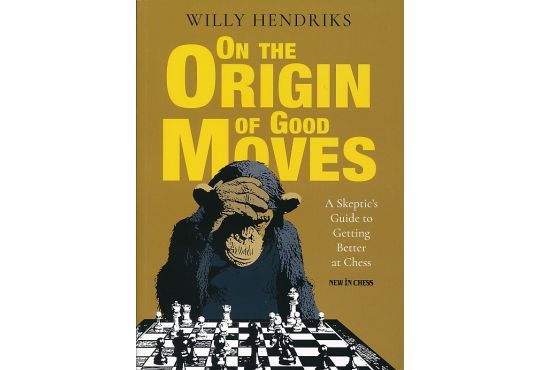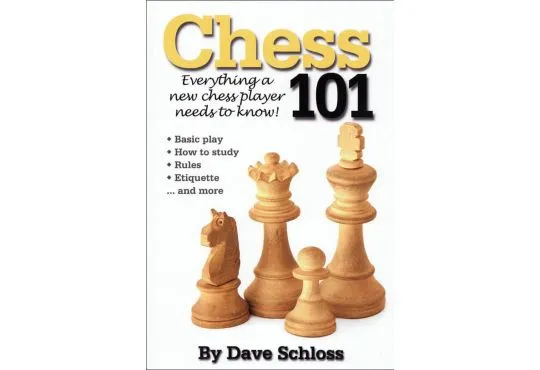How Many Chess Moves Are There?
Did you know that from the opening of a chess game, there are about twenty different chess moves to start the game? And that is just the beginning; the number of moves grows with each decision a player makes during the game. This enormous variety is what makes chess such a fascinating game for novice and expert players.
Chess has captivated people for decades because it is not just a game; it's a mathematical puzzle. The depth of a game on this eight-by-eight board is complex, but once you understand it, you can appreciate the strategy behind each move. But the question is, how many moves are there in a chess game?

Table of contents
Understanding Chess Moves
To understand the possible moves in a chess game, you must understand how each piece moves. Each chess piece has its own pattern and, therefore, its own moves. For a better understanding, breaking down these fundamental moves helps.
Basic Chess Moves
Here are some of the basic chess moves:
Pawns
Pawns move one square but capture diagonally. On their first move, however, they advance two squares. While it seems like this is limiting since each pawn moves either one or two times, pawns control the board and set up defences for their pieces.
Knights
Knights have the most unusual pattern in the game and usually move between five to ten times. They move in an L-shape, two squares in one direction and one in perpendicular. Through this, they jump over other pieces and are one of the most important pieces in the game.
Bishops
Next in the game are the bishops, which move diagonally; however, the twist is that one bishop can move diagonally on only the white squares while the other moves only on the white. So the number of moves depends on how well a player strategizes, but on average, they move around five to ten times in a game.
-
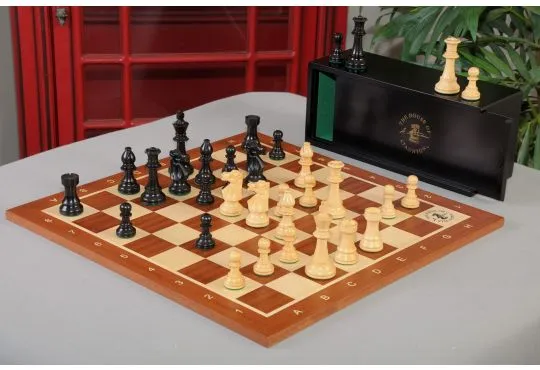 Free Worldwide Shipping
The Club Series Chess Set, Box, & Board Combination Enjoy Savings of 18% Off MSRP When Purchased as a Combination
Free Worldwide Shipping
The Club Series Chess Set, Box, & Board Combination Enjoy Savings of 18% Off MSRP When Purchased as a Combination$267.95
Starting at $219.00
To $293.95
-
 Free Worldwide Shipping
The Grandmaster Chess Set and Casket Combination Enjoy Savings of 25% Off MSRP When Purchased as a Combination
Free Worldwide Shipping
The Grandmaster Chess Set and Casket Combination Enjoy Savings of 25% Off MSRP When Purchased as a Combination$318.00
Starting at $239.00
To $269.00
-
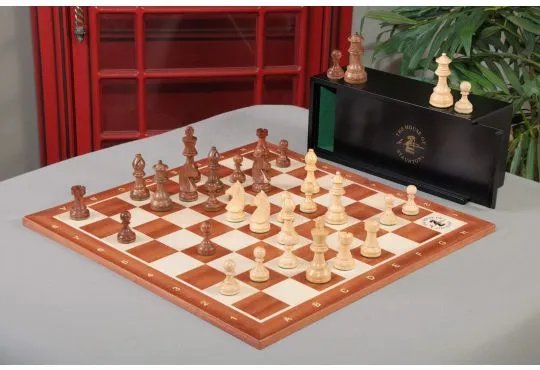 Free Worldwide Shipping
"The Queen's Gambit" Inspired Chess Set, Box, & Board Combination Enjoy Savings of 33% Off MSRP When Purchased as a Combination
Free Worldwide Shipping
"The Queen's Gambit" Inspired Chess Set, Box, & Board Combination Enjoy Savings of 33% Off MSRP When Purchased as a Combination$368.90
Starting at $249.00
To $328.95
Rooks/Castles
Rooks, often called Castles or chess towers because of their shape, are seen as protectors to the King and Queen. They can move vertically and horizontally across any number of squares. These are very powerful, especially when used with the Queen.
Queen
The Queen is the most formidable piece on the chessboard, combining both the rook and bishop’s movements. This means she can move at any number of places on the board horizontally, vertically, and diagonally. This makes her the favorite for many chess players.

King
The King moves one space in any direction, limiting its movements between two or five moves. Though not as strong as the Queen, the King’s movements are an important part of the game, especially the endgame, as the goal is to keep him safe.
Special Chess Moves
In addition to these basic moves, you can count special or expert moves often used during the game. Some of the most common are:
Castling
Castling involves the king and either rook. The king moves two squares towards the rook, and the rook jumps to the square next to the king. Castling can only occur if neither piece has moved before, there are no pieces between them, and the king is not in or moving through check.
En Passant
This rare pawn capture can occur when a pawn moves two squares forward from its starting position, and an opposing pawn could have captured it if it had moved only one square. However, the capture must be made immediately on the next move.
Pawn Promotion
When a pawn reaches the farthest row from its starting position, it is eligible for promotion to any other piece, except a king. Due to her power, this is usually a queen, but sometimes a knight, bishop, or rook is chosen as a strategic alternative.
Staunton Pro Tip: If you learn notations, you can record the moves and figure out your average ones within a game. Each square on the chessboard is identified by a coordinate, such as ‘a1’ for the bottom-left corner. Moves are noted by the initials of the piece; K for King or Q for Queen or the destination of the pawns, such as e4 for a pawn move or nf3 for a Knight move. chess algebraic notations are written in bold so they stand out.
Calculating Possible Chess Moves in a Single Position
The number of possible chess moves at any given moment can vary significantly depending on the stage of the game. From the opening moves to the intricate mid-game and down to the strategic endgame, understanding how the number of potential moves fluctuates can provide deeper insights into the complexity of a chess game. Let’s break down how these possibilities evolve as the game progresses.

Initial Positions
From the initial setup of a chess game, there are twenty possible moves: each of the eight pawns can move forward either one or two squares, and each of the two knights can jump to one of two different squares. This relatively small number quickly expands as the game progresses, introducing more pieces into play and creating many potential positions.
Mid Game Positions
When the game moves into the midgame, it becomes drastically more complex. Once pawns and knights have started moving, bishops, rooks, queens, and the king begin to play more active roles. Each additional piece that moves opens up new possibilities, leading to a substantial increase in the number of possible moves. It's estimated that in a typical mid-game position, there can be anywhere from thirty to forty possible legal moves. This variety is what makes each chess game unique and strategically rich, as players must consider multiple factors and anticipate their opponent's responses by using valuable information from expert sources.

Endgame Positions
As pieces are captured and the board empties, the number of possible moves starts to decrease. In the endgame, with fewer pieces left, the focus shifts to precise maneuvering and strategy. The remaining pieces - often just kings, a few pawns, and possibly a rook or minor piece - these have fewer possible moves, typically around twenty. The reduced complexity, however, makes the game more challenging. The endgame requires deep calculation and understanding of theoretical positions to secure a win or force a draw.
The number of possible chess moves varies widely throughout the game. From a modest twenty possible moves in the initial position, it explodes to dozens in the mid-game before contracting again in the endgame. This shift in possible moves makes chess an intellectually stimulating game, requiring players to adapt their strategies and think several moves ahead constantly..
Total Possible Chess Moves in a Chess Game
Calculating the possible moves in a chess game is nearly impossible. As established, the potential number of moves expands as the game continues. However, three concepts can help determine the closest thing to an estimated number of moves within a chess game.
Shannon Number
One of the most famous estimates in chess is the Shannon Number, which is named after the mathematician, Claude Shannon. He estimated that there are between 1043 and 1050 positions in a chess game. Simply stated, 1043 means the number 1, followed by forty-three zeroes, and 1050 means the number 1 followed by fifty zeros. These massive numbers highlight just how many different ways a chess game can unfold, underscoring the game's depth.
The Game Tree
In chess, a game tree represents all possible moves from a given position, branching out with each subsequent move. Starting from the initial position, each possible move leads to a new position, each of which branches out into further moves. This tree-like structure continues to expand as the game progresses. The initial branching factor is around twenty, but the number of branches increases as more pieces are developed, t. This tree illustrates the decision-making process in chess, where each move opens up a new set of possibilities and strategies.
Exponential Growth
The number of possible moves in a chess game grows exponentially with each turn. From the initial position, there are twenty possible moves. After each player has moved once, there are about four hundred possible positions. With each subsequent move, the number of possible positions increases exponentially. For example, after two moves each (four plies), there can be as many as 197,742 possible positions.

This exponential growth continues throughout the game, making the number of possible moves extraordinarily large. This growth pattern explains why chess computers need immense processing power to evaluate potential moves several turns ahead. Even with advanced algorithms, predicting the best move involves sifting through millions of possible outcomes.
Factors Influencing Possible Moves
Many factors influence how many moves there are in a game. These include the official rules of the game, the players’ experience, and the strategies used throughout the game. Once you understand how these factors impact the game, you can get an idea of the probable moves in each chess game.
Rules and Regulations
The rules of each chess game limit the number of moves that can be made. For example, the 50-Move Rule states that the game can be declared a draw if fifty moves pass without any pawn movement or piece capture,. Another rule is threefold repetition, where a game can be drawn if the same position occurs three times with the same player to move and all possible moves being the same. These rules prevent games from continuing indefinitely and limit the number of moves.
Tactics and Strategies
Strategic considerations greatly influence the choice of moves in a game. Players often follow opening principles, such as controlling the center and developing pieces, which reduce the number of reasonable moves to a manageable subset. As the game progresses, tactics like forks, pins, and skewers come into play, further influencing move choices. Strategic goals, such as attacking the opponent’s king or creating a passed pawn, also guide players’ decisions.

Players Skill Level
The skill level of the players also controls how many moves can be made within a chess game. A beginner would likely only see some of the potential moves and make straightforward, obvious choices. However, advanced players would analyze possible moves and plan deeper strategies or tactics. Grandmasters or chess engines can evaluate even more moves, increasing a game's complexity.
Conclusion
A chess game has a staggering number of possible moves, highlighting its extraordinary complexity and depth. You change and control this number from your first move to the last. Each move allows you to make the game more fascinating, practice your creativity, and ultimately master the game. So, the answer to the question of, ‘how many chess moves are there?’ is nearly infinite. If you want to know more, you can have a look at books, resources, and more from experts like House of Staunton.


